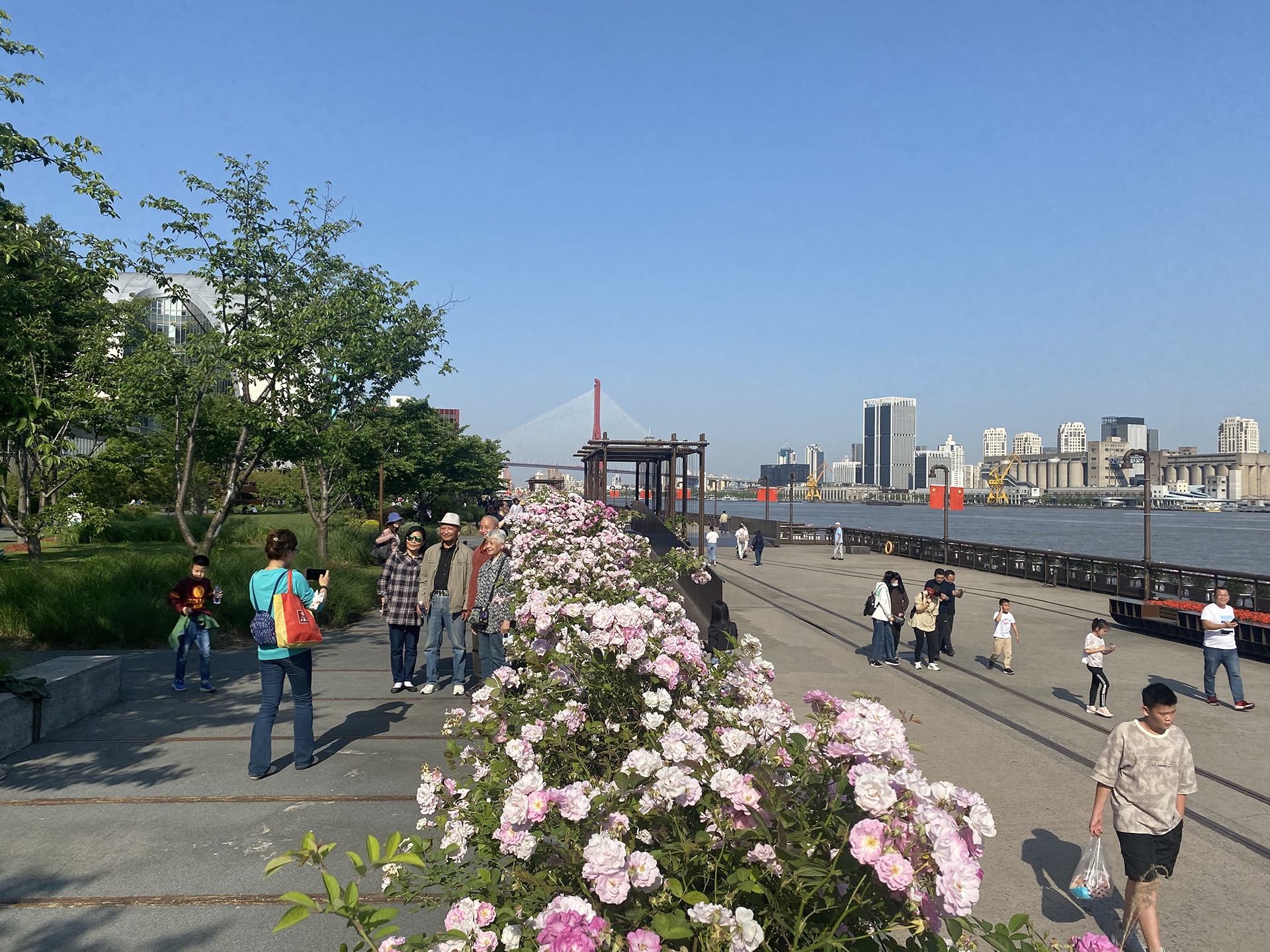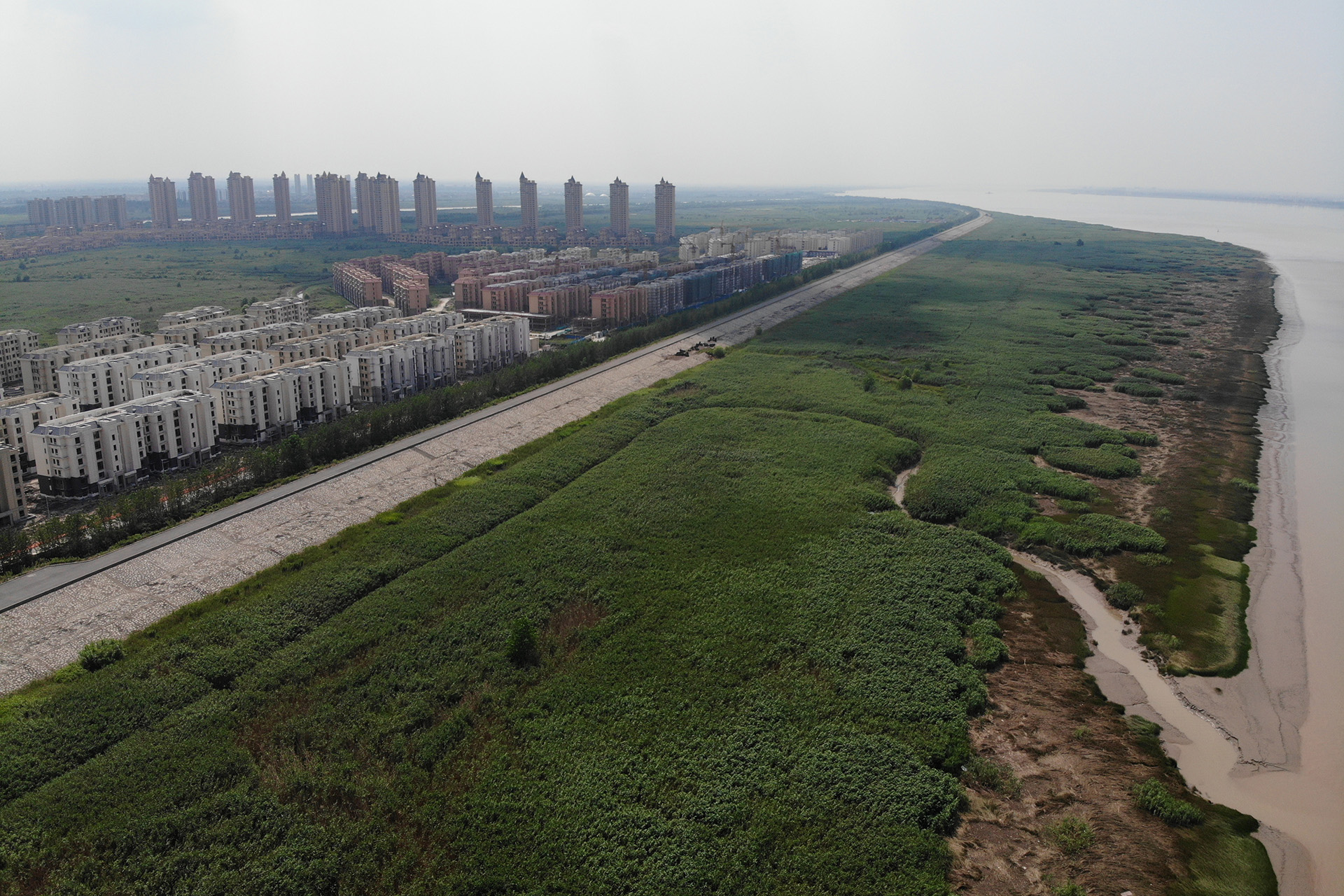With the rapid transformation of its waterfront, Shanghai provides a spectacular example of sustainable urban planning. Although the West can learn from its great ability to take action, not everything runs smoothly in Chinese practice, Harry den Hartog notes in his PhD research.
The banks of Shanghai’s central Huangpu River have always bustled with industrial activity, but that has changed quickly in recent years. Since the 2010 World Expo, which acted as a catalyst, the metropolis has been shifting its port activities far away from the city centre. Under the motto ‘Better City, Better Life’, they are being replaced by commercial and cultural real estate, apartment buildings and parks. And this is taking place along sixty kilometres of waterfront on both banks of this tributary of the Yangtze River. By comparison: Rotterdam spent about 30 years transforming its waterfront, resulting in 1.2 million square metres of real estate. “In Shanghai, they build the equivalent of Rotterdam’s Kop van Zuid district every year, with top international architects as designers,” Harry den Hartog explains. “And they are also making it an exemplary sustainable project. It’s extremely impressive.”
Underlying the massive transformation is the master plan ‘Striving for an Excellent Global City 2017-2035’, which leans heavily on the Chinese urban planning concept of ‘Ecological Civilisation’. Rooted in ancient Chinese philosophies, this modern sustainability philosophy opposes the West’s ‘wrong’ industrialisation policies. The big question in Den Hartog’s PhD research is to what extent this Chinese practice contributes to the international green transition – and vice versa.
Eco island Chongming
At first glance, Shanghai, with its unprecedented achievements, appears to be the world’s standard bearer for sustainable urban development. Local Chinese administrators flock to see this project which serves as a national example. The approach is grander and bolder than anywhere else in the world. The new, vast parks along the banks of the Huangpu River are popular with visitors. According to party leader Xi Jinping, it should become “a city by the people and for the people.” Sustainable construction methods are used for the many gleaming buildings rising up around it. What was once a dirty stinking river has been cleaned and rid of the sources of pollution that lay on its banks.

Moreover, Shanghai’s sustainability efforts are not limited to the Huangpu district. On the other side of the megacity, Chongming Island, at the mouth of the Yangtze River, has been designated as an ‘eco island’. This huge island – which is home to 800,000 people – consists in part of a nature reserve that is crucial for migratory birds. The island has a construction ban and should to entice city dwellers wanting to go on hikes.
Caveats
As wonderful as all of this is, there are also caveats to Shanghai’s sustainable revolution. For example, real estate prices on the transformed river banks are among the highest in the world. In addition to office buildings, many serviced apartments were built, with prices ranging up to 18,000 euros per square metre. A prime location like this only has room for the happy few.
Furthermore, at least 30 percent of the brand-new properties are vacant. How, then, can construction still be continuing unabated? This has to do with growing real estate prices. The Chinese middle class put their savings into bricks and mortar because it is considered a safe and lucrative investment.

Problems and governing
The development of the Chongming bird island is not without its problems either. The eastern side of this 25-kilometre-wide island is part of the neighbouring municipality of Nantong, where ‘wetland’ is interpreted as ‘wasteland’ and thus as a construction opportunity. The pile drivers soon started pounding, encouraged by planned rail links connecting neighbouring municipalities to Shanghai. The central government halted construction after the first blocks of houses were completed, and even proposed demolition, clearly indicating a certain degree of control. But the fact that it got to this point at all also reveals the rather chaotic underlying structure. “There are no clear definitions of urban planning concepts and there is a lack of consultation,” Den Hartog observes. “Moreover, public participation is an unknown phenomenon.”
Participation
The latter is part of the reason for so much vacancy in the transformed areas. Construction continues without people ever being asked what they want. There are some experiments involving public participation, but those few locations are the exceptions. The all-powerful government doesn’t have to consult anyone, because it owns all the land. Zoning plan changes and large-scale transformations are therefore much easier to implement than in the Netherlands. “On the one hand, we can learn something from that decisiveness, but on the other hand, China would benefit – as we do – from researching thoroughly before getting started. Because when things go wrong, they really go wrong,” says Den Hartog. “A correction is now taking place on Chongming Island, and you see that districts along the Huangpu river banks are learning from each other’s mistakes. Fortunately, progress is being made.”
More information
On 20 September, Harry den Hartog defends his PhD thesis 'Tensions and opportunities at Shanghai’s waterfronts: Laboratories for institutional strategies toward sustainable urban planning and delta design transitions'.

